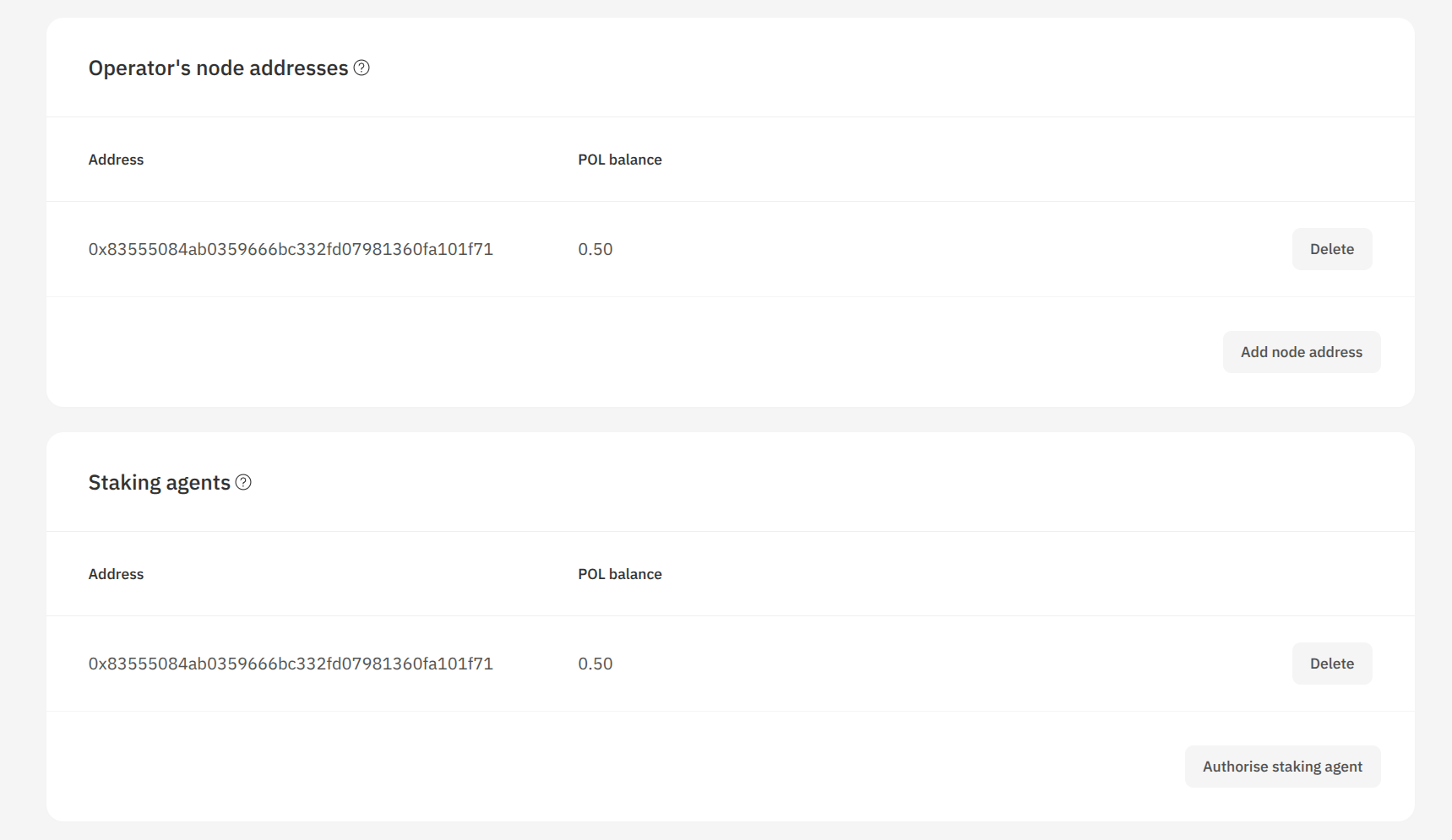How to run autostaker plugin
The autostaker plugin assists an operator by automatically selecting sponsorships to stake in and to unstake from, and by adjusting existing stakes to reflect the earnings available from sponsorships relative to other sponsorships. It also makes sure the operator swiftly discovers and joins new sponsorships as they emerge. This frees the operator from having to manually monitor and adjust stakes.
To run the autostaker plugin, a user must first be running one or more operator nodes. See How to become an Operator for more information.
The autostaker plugin should be enabled on all of your nodes. E.g., say you are running 4 nodes in total, each should be configured with autostaker enabled.
The autostaker plugin is enabled by adding the following section to your node configuration (under the plugins section):
{
"plugins": {
"autostaker": {
"operatorContractAddress": "<OPERATOR_ADDRESS>"
}
}
}
In addition, you need to assign the staking agent role to each node's address so they can adjust stakes on behalf of the operator. See Staking agents for how this is done.

- When choosing to run the autostaker plugin, the user should not manually adjust their operator's stakes, e.g. via the Hub. The autostaker will most likely undo any manual changes by returning the stakes back to the state it considers optimal.
- To withdraw earnings while the autostaker is enabled, you simply initiate a withdraw and wait for the undelegation queue to be processed by the autostaker. This will not be immediate, but will happen on the next activation of the autostaker (by default every 60 minutes).
Autostaker configuration options
The following config options are all optional. If not provided, the autostaker will run with default values.
- The integer
maxSponsorshipCountcontrols how many sponsorships the autostaker will stake into at most. The larger the capacity of your operator fleet state is (in terms of node count / CPU / bandwidth) the higher this number can be. Conversely, if your operator fleet is small, this integer should be kept low. - The integer
minTransactionDataTokenAmountcontrols the minimum value a transaction must be to be considered for execution. The value is expressed in $DATA tokens. Any transactions falling below this value will be skipped. This is to avoid executing transactions that are too small in value. To choose this value, balance the cost of gas vs. the value gained by staking the amount optimally. (The exception to this config is expired sponsorships, which will always be unstaked from regardless.) - The integer
maxAcceptableMinOperatorCountis used to decide whether to stake into a sponsorship that has a minimum operator count requirement. Such sponsorships only start paying out once the minimum operator count is reached. E.g. if a sponsorship has a minimum operator count of 20, and this is set to 20, the autostaker will stake into it. If it is set to 10, the autostaker will not stake into it. (The check is static and does not consider how many operators may currently already be staked into such a sponsorship.) - The integer
runIntervalInMscontrols how often the autostaker will run its logic. In addition to time-based runs, the autostaker will also run whenever a new sponsorship is created.
Example of setting these values (default values):
{
"plugins": {
"autostaker": {
"operatorContractAddress": "<OPERATOR_ADDRESS>",
"maxSponsorshipCount": 25,
"minTransactionDataTokenAmount": 1000,
"maxAcceptableMinOperatorCount": 50,
"runIntervalInMs": 3600000
}
}
}